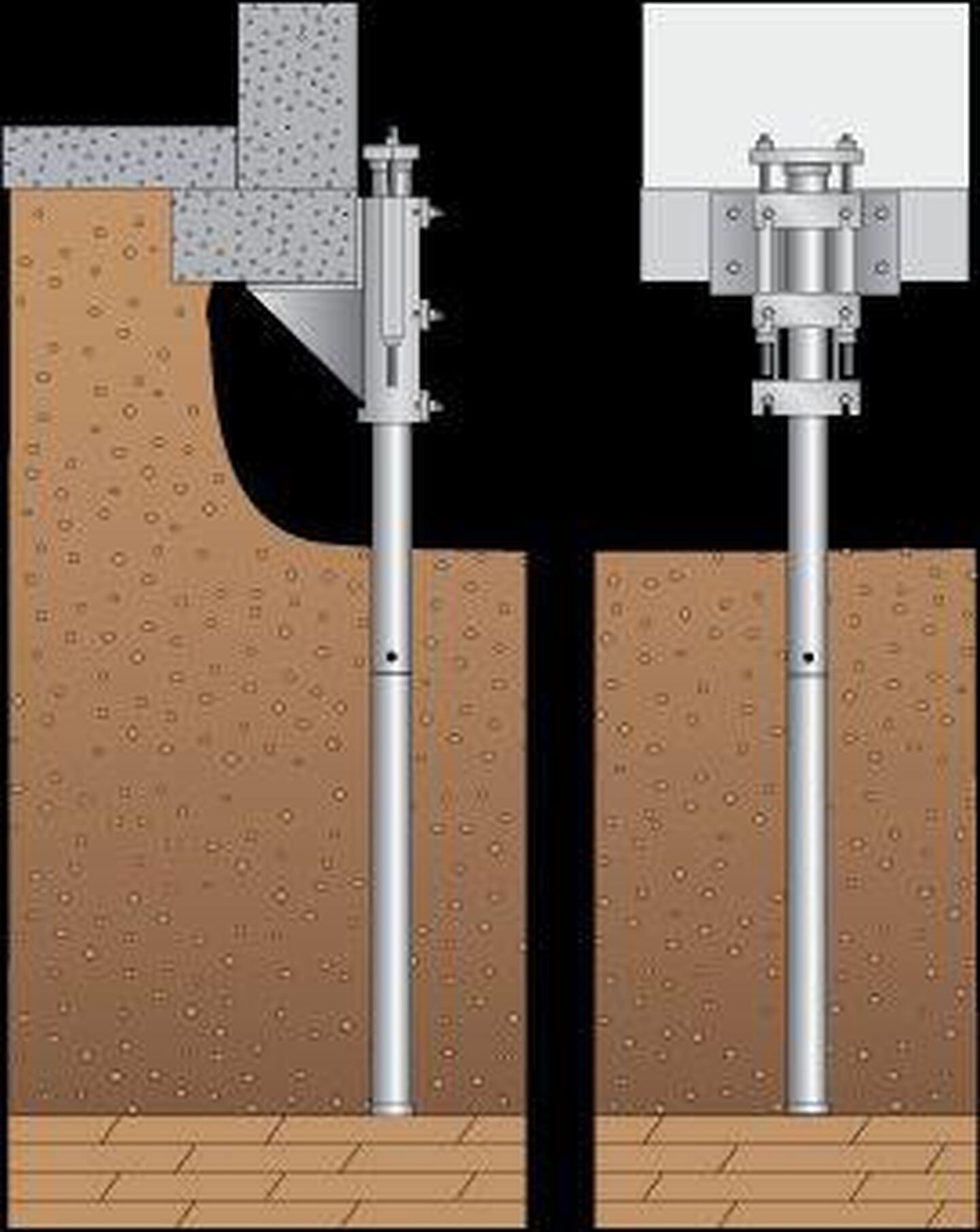How to Fix Structural Foundation Damage with Hydraulic Push Piers

You’ve begun to notice things, things around the house that just don’t seem right. Windows stick when you try to open or close them. Doors are jammed shut or won’t close at all. Cracks in the drywall are radiating from the corners of windows and doors.
You venture into the basement and see more cracks, this time in the concrete walls. You look up and see that the steel I‑beam that runs down the middle of the house looks like it has dropped at the end. You check with a carpenter’s level from your toolbox and see that the floor isn’t level any more.
Uh-oh. Your foundation has dropped and one end of your house is no longer level and that’s causing structural foundation damage. Obviously, something needs to be done – but what?
Hydraulic Push Piers – the Best Way to Raise and Stabilize a Foundation
The damage to your foundation has been caused by desiccated soil that has essentially shrunk below it; here’s a more detailed description of how that occurred.
In order to repair the damage, the foundation, and the home above, must be raised back to level and permanently supported in a way that prevents further sinking or settling. The best way to accomplish this is by installing hydraulic push piers. This method places a number of columns of structural steel around the foundation that rest on a load-bearing stratum underground. These columns are attached to the foundation after it has been raised hydraulically to provide solid, permanent support.
Here’s how hydraulic push piers work:
- Based on engineering data, including the size of the home and the composition of the soil, the number of piers needed to raise and support the foundation is calculated and placement is determined.
- A trained installer excavates next to the foundation at each point, digging a small hole down to the footing.
- A notch is cut in the footing and a steel bracket is attached to the foundation.
- The steel piling is then driven, section by section, through the bracket into the soil until it reaches the load-bearing stratum.
- Once all pilings have been driven, a hydraulic unit is attached to each bracket and connected to a central manifold.
- Using a powerful hydraulic pump, the entire affected section of the home is lifted at once until it has been restored to level.
- While the structure is being held at level, each bracket is permanently affixed so the weight of the structure is now supported by multiple steel columns.
- The hydraulic pressure is relieved, the pumping apparatus is removed and the holes are backfilled, leaving a stabilized foundation with no visible evidence of the repair.
Of course, there are other methods of supporting a sunken foundation, such as drilled concrete piers or pressed concrete pilings, but hydraulic steel push piers are generally regarded as the most cost-effective and permanent method of repair. It is also possible just to demolish and replace a foundation wall but it is a huge undertaking and doesn’t ensure that further settling won’t occur.
If the signs of structural foundation damage described above sound way too familiar to you, you’re going to need an expert that can help regain the stability of your foundation and ensure that your home will remain structurally sound. At U.S. Waterproofing, our team of advisors and installers has been specially trained to stabilize your home’s foundation without delay and with minimal disruption in the most cost-effective way possible. Why not ask for a free consultation if things at your house don’t seem entirely on the level?




